Verbal ramblings about personal computers
and a bit of World Watching
by Leonard Oliver Nasman, copyright 2005
(NOTE: colored underlined words are hyperlinks. Click on them for more info.)
I’m sitting here in Ohio waiting to see Old Faithful erupt. That’s right. The Old Faithful, the most famous Yellowstone National Park geyser. I can see it from here! The National Park Service has set up a web camera that shows Old Faithful.
Don’t want to wait? No matter, you can easily jump to a live view of Mammoth Hot Springs Or to other Yellowstone webcams.

I can just as easily jump over the oceal and take a look at what is happening right now in cities around the world. I can also tour nearly everywhere by looking at satellite views, or street level views from Google. (Drag the little yellow guy onto a street, then click and drag to change the view.) If I want a vicarious tour of a famous site, I can do it from my computer. For example, you can visit the Sistine Chapel and use your mouse to get better views than if you were actually there.
It’s hard to believe that you can sit in the comfort of your own home and watch what is happening right now, thousands of miles away, or even on the other side of the world. But that is just one of the amazing things that are now possible with the use of personal computers that are connected to the World Wide Web.
It seems like only a quarter of a century ago that I was subscribing to all of the different personal computer magazines in print. There were three... Byte, Creative Computing, and Kilobaud Microcomputing. There were a lot of arguments among the pundits of those days about whether personal computers would ever become useful or popular. Some cynics claimed that personal computers were a solution in search of a problem. Others claimed that they might be OK for playing games, organizing recipe collections and balancing checkbooks, but that was about it.
My first home computer, the Bally Arcade, 1977
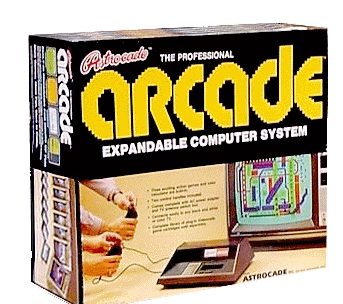
Little did they know what a revolution personal computers would create. The average laptop computer of 2005 has more raw computing power than the computers that were used on the missions to the moon and back. PC’s have replaced MIS (Management Information Systems) departments in most companies. IBM has gone from dominating the world of computing with their 3 million dollar main frames and their aggressive ‘pin striped mafia’ sales force, to recently selling their fading computer division to a Chinese company. Not many people believed in the late 1970’s that the era of big computers was about to be blown away by desktop PC’s. As a matter of fact, it hadn’t been that many years earlier that a government study concluded that four computers were about all the United States would need.
Personal computers have come a long way from balancing checkbooks and organizing recipes. It is hard to think of a business or activity that has not in some way been impacted by desktop or laptop PC’s.
In my case, PC’s moved from my expensive toy to dramatically changing my employment direction, and ultimately becoming the primary source of my income. They do remain one of my best toys, however. I use my computers for a seemingly endless list of hobbies... creative (hopefully) writing, composing and playing music, communicating with friends around the world, and genealogy research, just to name a few.
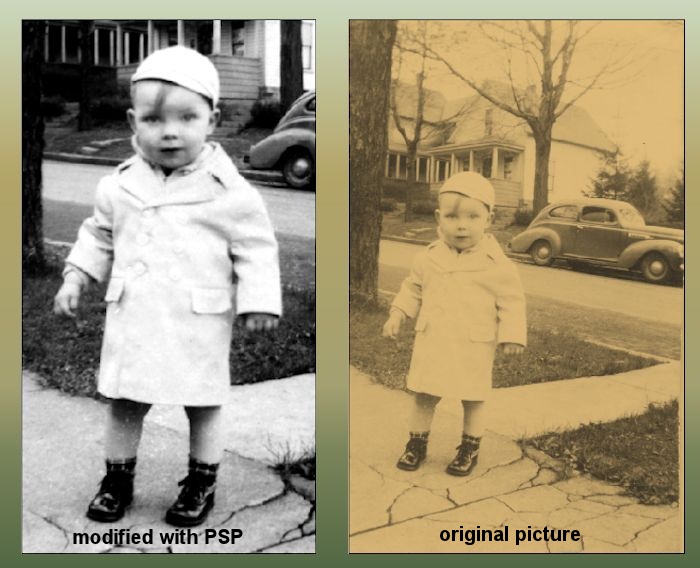
Computers have also changed the way I do photography. Instead of messing with chemicals for processing and printing pictures, I can now quickly copy digital picture files from my camera to my computer, and then crop to improve compositions, adjust contrast, brightness, or exposure problems, and then print whatever pictures I want, whatever size I want. No more waiting for the film to be processed, and paying for printing of both good and bad shots. I can scan old nearly un-viewable family pictures into the computer, and then use Paint Shop Pro to restore them to sometimes better than original condition.
The first technical book I produced required cutting and pasting illustrations and blocks of text together, making copies, and then sending them to a print shop where they produced separate printing plates for each page of the book. As the power of personal computers and software increased, I could finally do all of the pre-production in my computer (including text formatting, and graphic images), create a single computer file for an entire 500 page text, copy the file onto a data CD, and send it to a print shop. The printer can produce complete books from a single file on the CD. I used to have to wait a month or two after submitting ‘camera-ready’ copy to a printer to get finished books. Now it can be done in a couple of days.

Somewhere in the 1960’s I made our annual Christmas Card by silk screening a crude line drawing onto heavy paper and then pasting copies of a photograph (in black and white) on each card. Now I can create a card in a computer with words and graphics arranged in such a way that when a single printed page is folded, it makes a finished card... in color.
Long before anyone thought much about using computers for composing music, some strange folks found a way to play crude music on printers. These people experimented with the big line printers (printers that printed a complete line of text in one pass) to discover what combination of letters caused what pitch sounds. Then they made the computers print pages of unreadable text, but that actually resulted in recognizable tunes. This was an amusing pastime that wasted mass quantities of paper. This technique, however, was not ready for the concert stage.

Now we see a blending of electronic instruments and personal computers. Some digital electronic instruments store recordings of real instruments in a way that makes it possible to make the sound from an electronic instrument almost impossible to tell from the original. Computer software has been developed that allows a composer to create new compositions as a writer might use a computer to write text. The computer can then be used to play the composition using electronic instruments, or a synthesizer. Wait, it gets even more elaborate. It is even possible to play on an electronic keyboard connected to a computer, have the computer record each note, and immediately print sheet music for the selection that was played.
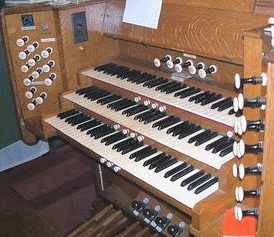
Would Bach have approved? I am sure that he would have. After all, he wrote for and played pipe organs that were designed to simulate a number of different instruments.
I have a program called Sibelius that is used by professional composers. This software allows a number of different methods of entering notes. The composer can enter notes by playing them on an electronic keyboard, typing particular keys on the computer keyboard for each note, or visually place the notes on a musical staff using the computer mouse.
Once staffs of notes have been entered into the score, each staff can be associated with a particular instrument. Most all standard musical notations can be added, such as dynamics or tempo. The software even provides for playing back the score with a tempo that does not sound precise or machine-like.
With regard to the church organ that Bach used: an old problem in small town churches is sometimes finding someone to play the organ. Now, if there is no organist available, or if the organist comes down with the flu at the last minute, even the smallest church can afford a computer and electronic organ synthesizer. A quick search of the Internet will reveal that the entire contents of a number of hymnals are available for downloading as MIDI files. (MIDI stands for Music Industry Digital Interface. MIDI files allow music to be played using a computer equipped with an electronic instrument synthesizer.)
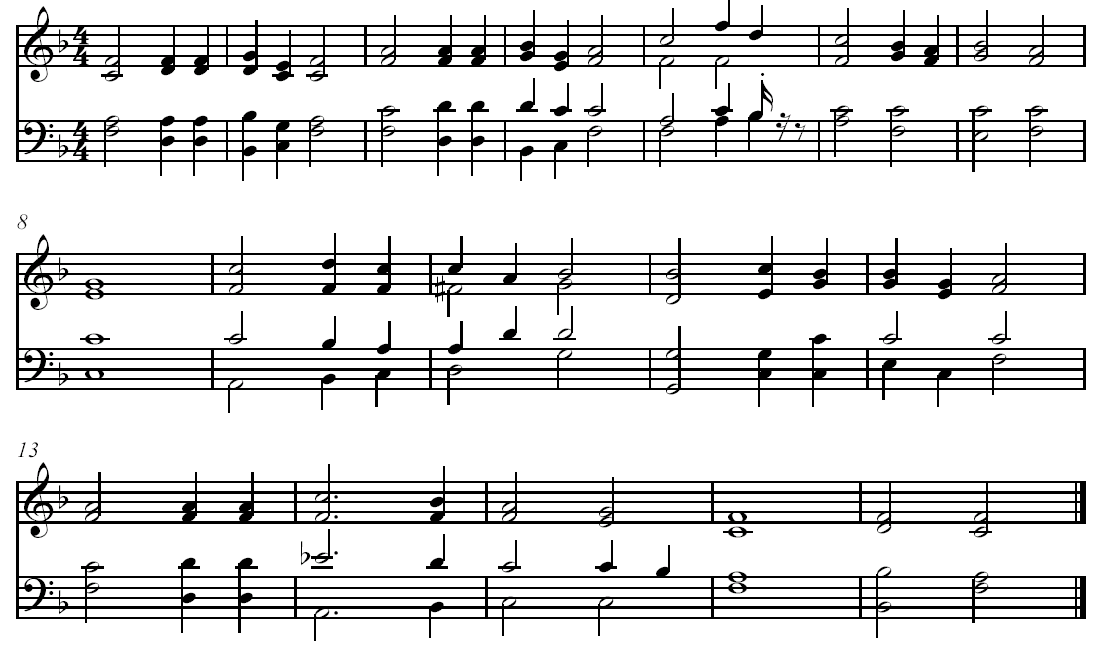
Beautiful Saviour, copied from a MIDI file and printed from Sibelius.
Here is an example of a hymn (Beautiful Savior) that was a MIDI file downloaded from the Internet, opened using Sibelius, and then printed from Sibelius and imported into this article. The same MIDI file can be played on nearly any personal computer. WIth a good amplifier and some decent speakers, most blindfolded folks could not tell whether it was a computer or a person playing the music.
Using a program like Sibelius, you can create a separate track for each instrument. These tracks can be assigned to be played either by the sounds available inside a computer, or by an external sound module. With a couple more pieces of software, it is possible to mix computer sound tracks with live recording. Then, with the addition of video editing software like Davinci Resolve, you can create your own Videos and put them on YouTube.
Software that has been developed for use on personal computers includes everything from serious powerful tools for business and industry to some very entertaining (and some disgusting) games.
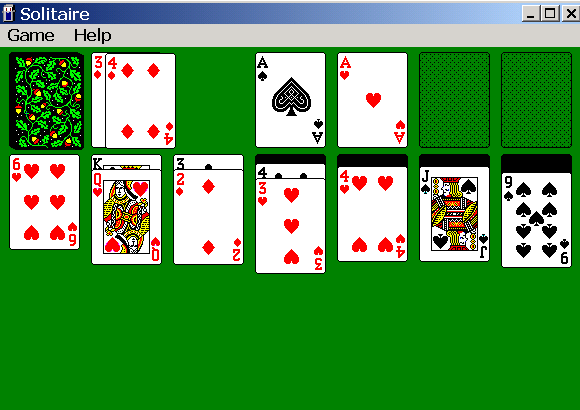
I have seen some senior citizens whose hands can no longer shuffle or handle a deck of cards having a good time playing some of their old favorite card games on the computer. The only dexterity required is moving a computer mouse (or large trackball) and pushing a button. Computers can be used to enlarge text for those visually impaired or even speak text using a voice synthesizer for those who cannot see at all.
Of course, computers, like most any tool, can be used both for good and evil. Just as a stone can be used to build a house, it can also be used to kill, The stone itself has no conscience. Some of my acquaintances like to blame computers for causing them strife or grief. However, that is like blaming a stone for flying through the air and hitting you on the head. When computers are used poorly, it is not the fault of the computer, but of the people behind them. I only wish that humans had advanced socially as well as they have advanced technologically.

And so, what started as expensive time burners for techno freaks has changed the world. Some jobs and occupations have disappeared because of personal computers, and some jobs have been created that were not dreamed of a few years back. Some work is easier to do because of computers, and some folks have to work harder because of computers.
As for me, I can sit here and use the computer as a window on the world. Some days I enjoy watching live views from places around the world.
Computers can provide a armchair view of the world, and have changed our world in an amazing number of ways.

